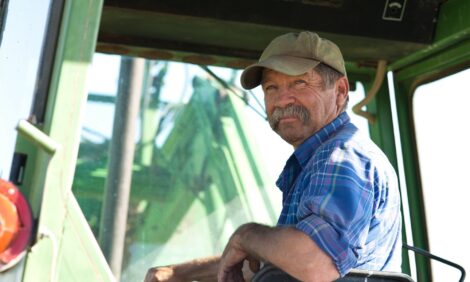



Schmallenberg Virus – Updated Testing Results
UK - Details of the spread of the Schmallenberg Virus are given, including the locations of affected animals in Scotland. The figures have been verified as correct for the date 14 December 2012.
The Animal Health and Veterinary Laboratories Agency, as of December 14, has reported a total of 976 Schmallenberg cases with a total of 673 cases of the disease found in cattle.
Both surveillance initiatives were based on free testing of cases that met certain criteria in previously
unaffected counties. As Schmallenberg virus has now been identified in most counties of England and
Wales, the enhanced surveillance has served the purpose for which it was introduced: to identify
cases in previously unaffected areas as early as possible. The two initiatives will therefore cease with
effect from today (14 December 2012).
Farmers are advised by the AHVLA to contact their veterinarians if they have concerns and vets should contact their local
AHVLA Investigation Centre if they require advice.
1. The Animal Health and Veterinary Laboratories Agency is an executive agency of the
Department for Environment, Food and Rural Affairs, working across Great Britain on behalf
of Defra, Scottish Government and Welsh Government.
2. Schmallenberg virus (SBV) is a vector* borne virus identified in 2011 that affects sheep, cattle
and goats and is widely distributed in Northern and Western Europe and the United Kingdom.
Its acute form can cause mild to moderate fever, reduced milk yield, loss of appetite, loss of
body condition and sometimes diarrhoea in adult cattle. It can also lead to abnormalities in
newborn animals, such as twisted necks or limbs in still and live births, mainly in sheep but
also in cattle and goats and has been linked to late abortions.
[*vectors are organisms – in this case biting insects, such as midges and mosquitoes - that
transmit infections from one host to another]
3. Farmers are advised to contact their veterinary practitioner if they encounter the following
symptoms, and SBV infection is suspected: cases of ruminant new borns or foetuses which are stillborn, show malformations or are
showing nervous disease, signs such as a transient drop in milk yield, fever and diarrhoea in adult dairy cattle.
4. Veterinary practitioners should contact their AHVLA / SRUC laboratory if they suspect infection
with the virus. Details of premises with suspected or confirmed disease are treated as confidential
and will not be made publicly known. Laboratories will require a full history to provide the
necessary clinical and epidemiological information.
5. Further information on SBV is available at: http://vla.defra.gov.uk/science/sci_schmallenberg.htm
TheCattleSite News Desk


